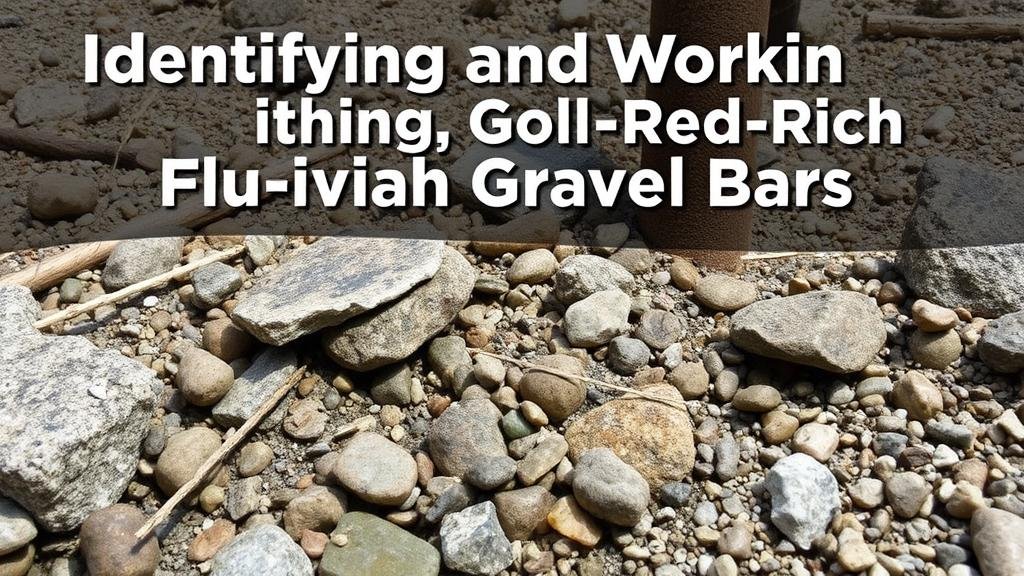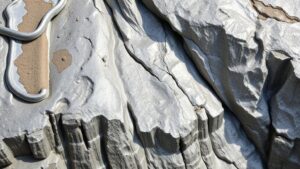Identifying and Working Gold-Rich Fluvial Gravel Bars
Identifying and Working Gold-Rich Fluvial Gravel Bars
Gold mining has evolved from large-scale industrial operations to more accessible and personal methods, particularly in the context of fluvial (river) systems. Fluvial gold occurs in river beds and gravel bars, where erosion and deposition play critical roles in concentrating gold particles. This article will discuss how to identify and work fluvial gravel bars that may be rich in gold deposits.
Understanding Fluvial Processes
To effectively locate gold-rich gravel bars, its essential to understand the fluvial processes at work. Rivers are dynamic systems that shape the landscape by eroding materials from their banks and transporting them downstream. Fluvial processes can broadly be categorized into erosion, transport, and deposition.
- Erosion: This involves the removal of particles from rocks during high water flow. When water speed increases, heavier materials are dislodged, leading to potential gold accumulation in other areas.
- Transport: Gold and other sediments are moved by water, particularly during flood events. Understanding the flow rates and direction can help pinpoint where gold is likely being deposited.
- Deposition: As river velocity decreases, it loses capacity to carry sediments, leading to the deposition of materials, often on gravel bars. This is where gold can accumulate.
According to the U.S. Geological Survey, gold found in fluvial settings accounts for approximately 80% of the worlds gold supply, highlighting the importance of understanding these processes.
Identifying Potential Gold-Rich Gravel Bars
Not all gravel bars are created equally. Its crucial to identify which bars are most likely to contain gold. Here are key indicators to help in this process:
- Location: Bars located near historical gold mining areas often yield better results. For example, the Yuba River in California has several documented gold-rich areas.
- Size and Shape: Wider, more elongated gravel bars can trap gold more effectively than narrower ones. Examination of the bars shape relative to the river flow can provide insight into accumulation zones.
- Texture: Coarser material is more likely to retain gold because heavy particles settle out faster than lighter ones. Look for gravels mixed with larger stones.
Techniques for Gold Recovery
Once potential gold-rich gravel bars have been identified, extracting gold requires appropriate techniques. Various methods can be employed, each with its own advantages and drawbacks:
- Panning: This is the simplest method, ideal for beginners. By filling a pan with sediment and shaking it underwater, gold can settle to the bottom due to its density.
- Sluice Boxes: A sluice box is more efficient than panning. It allows greater quantities of gravel to be processed, using water flow to separate lighter materials from gold.
- Dredging: For larger operations, suction dredges can be effective for underwater mining, although this method may have environmental impacts that require regulatory oversight.
Real-world applications of these methods indicate their effectiveness; for instance, miners in Alaska have successfully employed sluice boxes for high-yield results in gravel bars, particularly during the summer months when river flows are manageable.
Environmental Considerations
When extracting gold from fluvial systems, it’s vital to consider the environmental impact. Here are some key considerations:
- Regulations: Adhering to local, state, and federal regulations is crucial to avoid fines and ensure sustainable practices.
- Habitat Protection: Minimizing disruption to wildlife habitats is crucial. Techniques such as using smaller tools for panning can lessen ecological footprints.
- Siltation Control: Preventing excessive sedimentation downstream protects aquatic life and maintains the health of the river ecosystem.
Actionable Takeaways
Identifying and working with gold-rich fluvial gravel bars can be a rewarding endeavor, both financially and recreationally. Here are key points to remember:
- Understand the basic fluvial processes–erosion, transport, and deposition–as they are essential to locating gold.
- Look for gravel bars in historical mining areas that exhibit specific characteristics like size and texture.
- Use suitable recovery methods such as panning or sluice boxes, based on your expertise and scale of operation.
- Always prioritize environmental responsibility in your mining activities to ensure sustainability and compliance with regulatory frameworks.
By adhering to these guidelines, hobbyists and professional miners alike can enhance their chances of successfully identifying and extracting gold from fluvial gravel bars.


